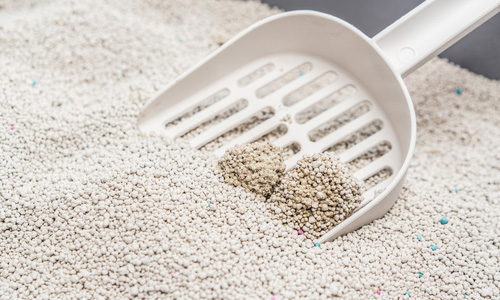
How is it Made: Cat Litter
Cat Litter – An Interesting History
Cat litter, a humble pet care product that revolutionized the pet industry, has an interesting history. Before the invention of industrialized cat litter that is used today, people used materials like sand, soil, or ashes to process the waste of their feline friends.
However, in 1947, a world-changing event occurred when Edward Lowe, now known as the father of cat litter, discovered its potential by chance. Lowe’s neighbor, Mrs. Draper, asked him for some sand for her cat since her sand pile was frozen. Instead of sand, Lowe offered her a different absorbent clay instead. Mrs. Draper loved the clay and thus sparked the invention of “kitty litter,” which is now a multi-billion-dollar industry.
Fast forward to the present day, the cat litter industry is set to reach USD 16.44 billion in 2030 from USD 10.82 billion in 2021.
Per the 2023-24 APPA National Pet Owners Survey, there are 46.5 million cats in the US alone, driving the growth of the cat litter industry. Cat litter has evolved over the years with eco-friendly options, odor control technology, and convenience for pet owners.
What Cat Litter is Made of
Today, cat litter comes in various forms, like clumping clay, silica gel, and biodegradable alternatives which fulfill the diverse needs of pet owners.
Cat Litter Varieties and Composition
Below is a list of different types of cat litter and the materials they are made of:
CLAY
More likely than not, if you are using cat litter, you’re using cat litter made of clay. The most common clay used to make cat litter is bentonite due to its exceptional absorbent and odor-control properties.
SILICA GEL
Another cat litter material that is rapidly growing in use is silica gel-based. It has excellent moisture absorption, odor control, and anti-bacterial properties.
BIODEGRADABLE MATERIALS
Finally, there are more environmentally conscious cat litter materials that can reduce the carbon footprint caused by our furry friends. There are several green raw materials available for making cat litter, such as:
- Grains – Byproducts of hard grains can be used to manufacture cat litter in a production line. They are typically milled to the required consistency then combined with a perfume, corncob pieces, and catnip. The enzymes in the grain mixture naturally neutralize the cat’s waste odors.
- Corncobs – Recycled corncobs can be ground and heated to create 5x more absorbent cat litter pellets. These pellets will clump and are typically flushable as well.
- Wood – Recycled waste from the lumber industry can be used as cat litter, especially cedar chips and aspen waste. These chips are lighter than standard clay which makes the litter lighter and more odor-absorbent.
- Paper – When consumer paper is recycled, it produces long and short fibers. Manufacturers can pelletize, dry, and combine the short fibers with odor-control substances and package them as 40% lighter and flushable cat litter.
- Grass – Grasses such as northern red wheat straw grasses can be ground and chopped into tiny pieces before pelletizing them to create biodegradable cat litter.
- Peels of Citrus Fruits – The peels of de-juiced citrus fruits can be pressed and dried using natural gas-fired kilns. The resultant product can then be screened to remove the smaller particles and dust. This cat litter defuses odor efficiently and is absorbent and flushable.
Cat Litter Manufacturing Process
The cat litter manufacturing process involves:
- Preparing the material by refining it for desired texture and absorbency.
- Blending the material with additives for improved performance.
- Shaping and drying the blend into granules or pellets.
- Implementing rigorous quality control measures to ensure absorbency, clumping (if applicable), dust control, and overall performance.
At S.Howes, we understand the importance of efficient cat litter production. We have supplied many pieces of process equipment into the cat litter industries for these various steps.
Our expertise lies in designing and manufacturing industrial processing equipment, including custom screw conveyors that play a crucial role in moving through a cat litter production line and continuous mixers to ensure a homogenized product with minimal dust.
Contact us for more information!